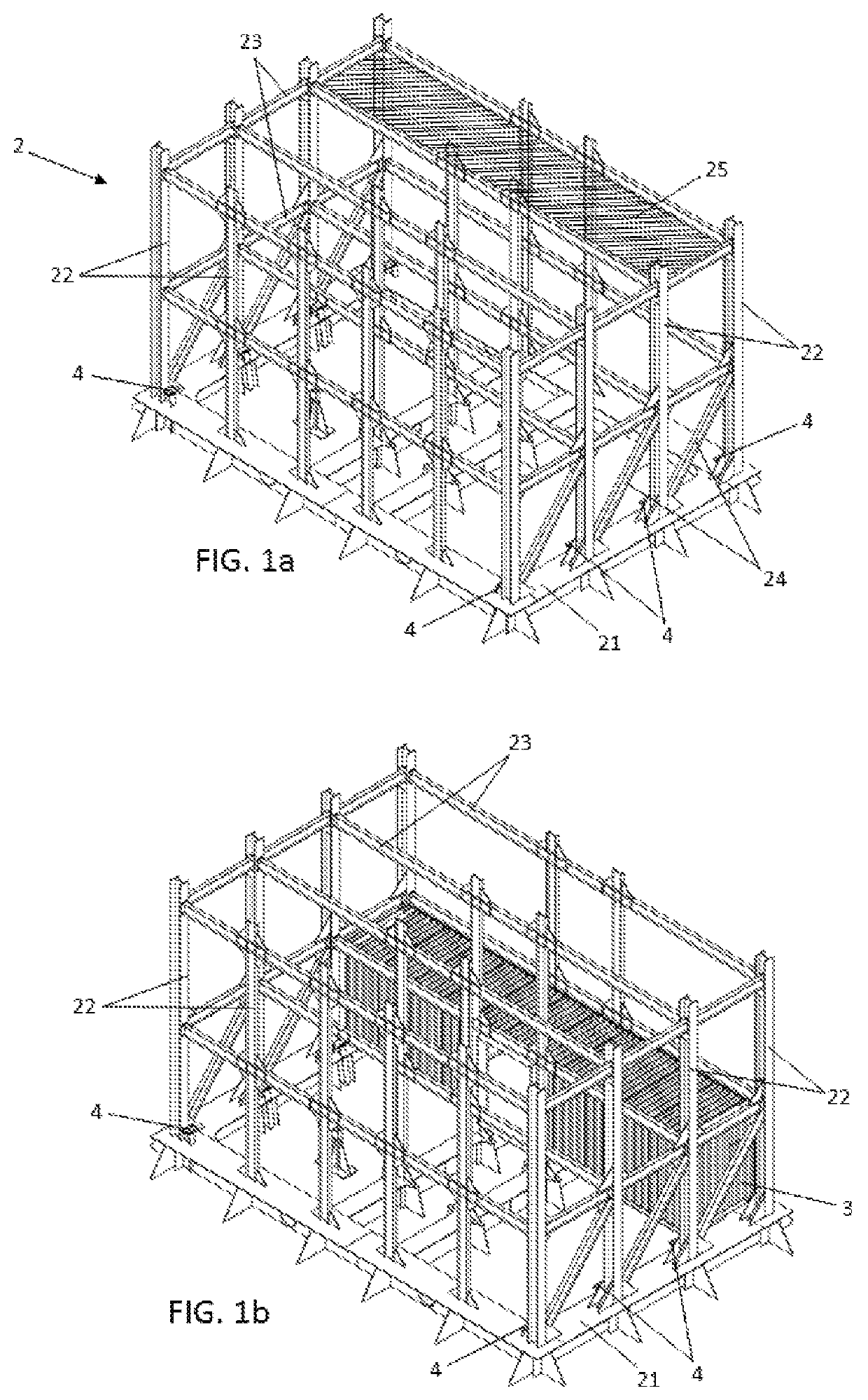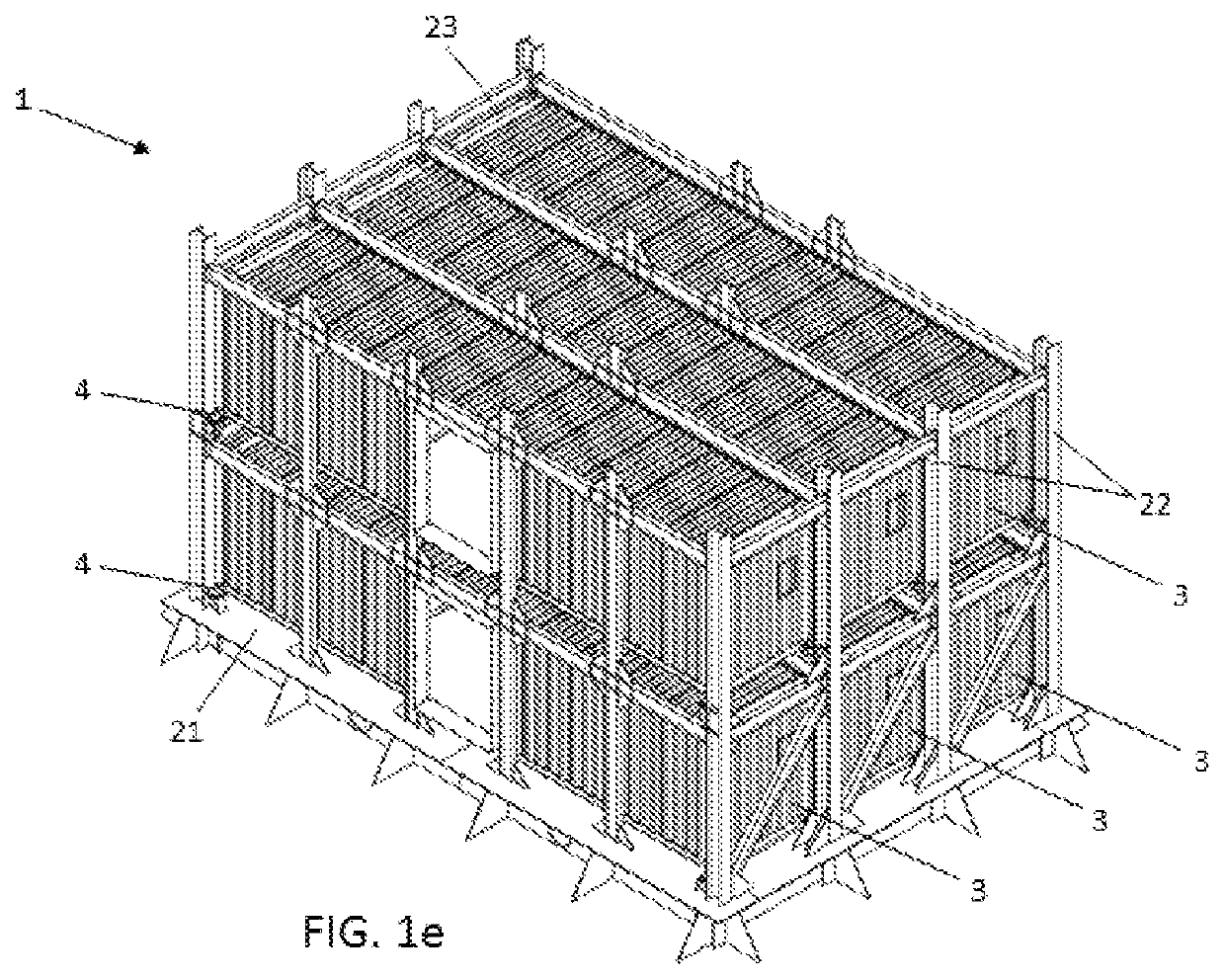System and method for constructing habitable installations for floating structures
a technology for floating structures and living quarters, applied in floating buildings, waterborne vessels, building components, etc., can solve problems such as significant time and cost saving and specific difficulties
- Summary
- Abstract
- Description
- Claims
- Application Information
AI Technical Summary
Benefits of technology
Problems solved by technology
Method used
Image
Examples
Embodiment Construction
[0011]This invention describes a construction procedure of living quarters for floating artefacts which imply several advantages, when compared to the systems and procedures which are known up to date.
[0012]In this document, the term “living quarter” refers to any type of construction for a floating artefact, which involves certain rooms aimed for being used by people, no matter if they are for being used as cabins, living rooms, meeting rooms, dining rooms, etc.
[0013]In this document, the term “floating artefact” refers to any artefact aimed for floating and for being used on the water surface, no matter if it is for sea, rivers, lakes, marshes, etc., including vessels, offshore fixed or mobile platforms, of other forms of floating artefacts.
[0014]In this document, the term “point support” refers to a support which only occupies a very short section of one standardized container's edge, when compared to the total length of that edge. As it will be further described herein, a standa...
PUM
 Login to View More
Login to View More Abstract
Description
Claims
Application Information
 Login to View More
Login to View More - R&D
- Intellectual Property
- Life Sciences
- Materials
- Tech Scout
- Unparalleled Data Quality
- Higher Quality Content
- 60% Fewer Hallucinations
Browse by: Latest US Patents, China's latest patents, Technical Efficacy Thesaurus, Application Domain, Technology Topic, Popular Technical Reports.
© 2025 PatSnap. All rights reserved.Legal|Privacy policy|Modern Slavery Act Transparency Statement|Sitemap|About US| Contact US: help@patsnap.com



